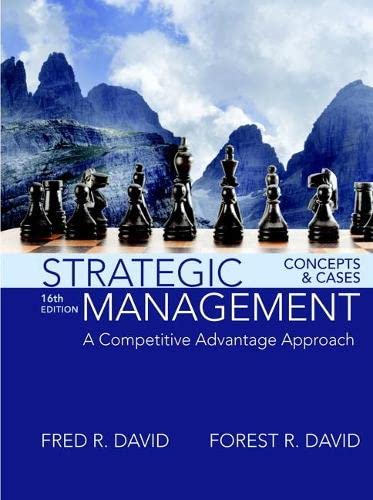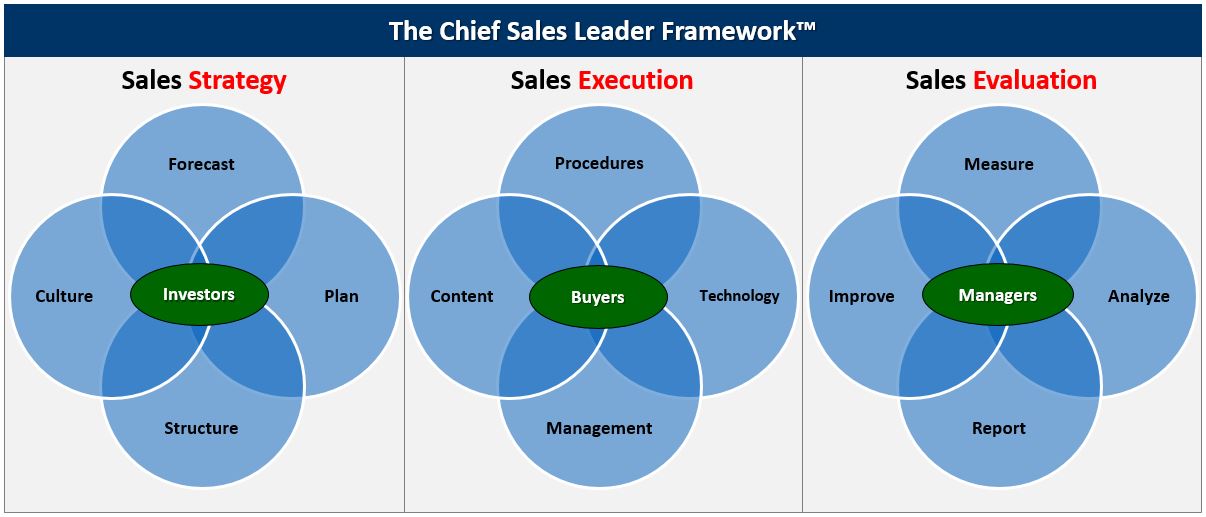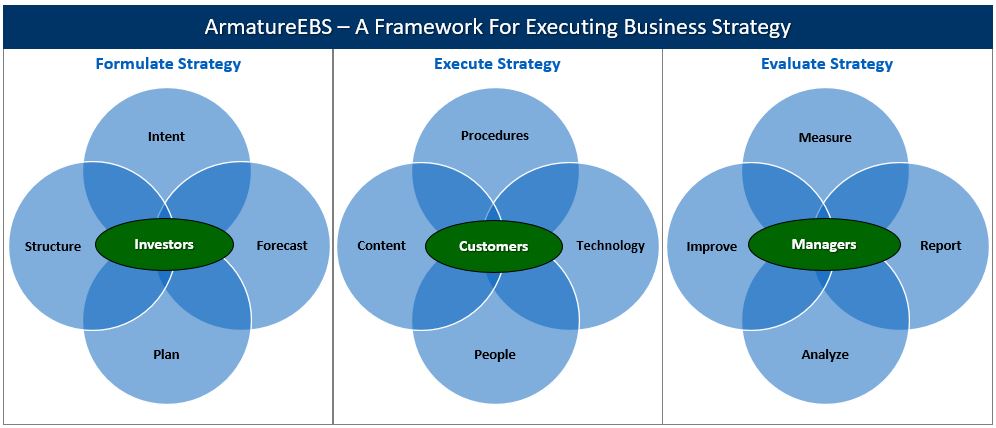The Chief Sales Leader Framework™
A methodology used by sales teams to execute with precision – – effectively, efficiently & predictably
The Genesis of The Chief Sales Leader Framework™
For nearly 30-years we searched for a management solution for building sustainable revenue growth year-after-year. We found a framework in an unlikely place – – a college textbook that had set on my bookshelf for 30-years – – The Principles of Strategic Management.
The basic concept is that for a company, and its leaders, to achieve success year-after-year they need to proactively manage three strategic processes and twelve operating processes:
- Strategy – forecasting, planning, organization structure, and culture
- Execution – process, people, technology, and information
- Evaluation – tracking, analyzing, reporting, and process improvement

ArmatureEBS Framework
A practical guide for solving revenue growth problems and executing revenue growth strategy with precision – – effectively, efficiently and predictably.
The ArmatureEBS Framework translates the time-tested Principles of Strategic Management into a practical guide for taking control of your revenue growth infrastructure.
This enables entrepreneurs and executives to turn struggling companies into thriving businesses that continuously grow and innovate with precision – – effectively, efficiently and predictably.

The ArmatureEBS Framework transparently cascades process accountability at the strategic, operating, tactical and activity levels.
Strategy Formulation Requirements
Translate Mission, Vision, Values and Behaviors

Clarify your strategic intent including your purpose (mission), core values and behaviors, goals (vision) and strategic initiatives.
Forecast Accurately and Timely

Align your forecasts for revenue, work activities, productivity, staffing levels, and expense requirements.
Plan Products, Services, Markets and Execution

Validate that your product, service, industry, geographic, and customer plans are viable in the external marketplace.
Structure Businesses, Departments and Jobs

Organize your business units, processes, departments, and jobs to clarify responsibilities, drive accountability and achieve results.
Strategy Execution Requirements
Map and Document Procedures

Transparently identify work activities for serving each customer use case, across every stage of the customer life cycle.
Deploy Technology Enablers

Ensure that technology is enabling your employees and managers – – rather than disenabling them!
Integrate Management Practices

Integrate your human resource practices to your mission, vision and goals at every stage of the employee life cycle.
Transfer Technical Knowledge

Provide instant access to instructions and policies so employees and managers can execute with precision!
Strategy Evaluation Requirements
Accurate and Complete Data Tracking
Ensure that data fields are hierarchical, have consistent naming conventions, are collected as work is completed, are fully populated, and stored together.
Trusted and Timely Analytics

Integrate data tables so consistent analysis, interpretation, gap identification and process improvements can be instantly prioritized.
Cascaded Reporting For Managers & Employees

Organize and Display data hierarchies uniformly so executives, managers and employees have a consistent view of data and analysis.
Actionable Process Improvements

Clarify action plans with specific accountability, actions, deadlines, expected outcomes, expenses, ROI; frequent progress reviews.
Part 1 – Formulate Sales Strategy

Sales Forecasting
- Revenue forecast including recurring/renewals and new customer acquisition
- Sales pipeline activity forecast
- Sales productivity forecast
- Sales staffing forecast
- Selling expense forecast
Sales Planning
- Market/Industry plans
- Product and Service plans
- Pricing plans
- Customer plans
- Competitor plans
- Staffing plan
- Facilitating management plan
- Computer hardware plan
- Fleet management plan


Sales Organization Structure
- Sales channel structure
- Job structure and descriptions
- Sub-department structure
- Sales territory design
- Management span of control
- Decision-making authority
Sales Culture
- Alignment with company values and purpose
- Behaviors, beliefs, and assumptions
- Company history understanding
- Office environment
- Camaraderie
- Celebrations
- Community involvement
- Decision-making consistency
- Communication
- Commitment

Part 2 – Execute Sales Strategy

Sales Procedures
- New Customer Acquisition
- Renewing Customers
- Cross-Selling and Up-Selling
- Winning Back Past Customers
- Customer Service
- Channel Partner Sales
Sales Technology
- CRM system
- Marketing automation
- Customer service system
- Phone and auto-dialer systems
- Sales presentation library
- Knowledge management systems
- Productivity software
- Project management software
- Sales territory mapping
- Sales analysis and reporting software
- Human resource information system (HRIS)


Sales Content & Presentations
- Awareness building content i.e. blogs, white papers, checklists, etc.
- Evaluation content i.e. case studies, data sheets, comparisons, etc.
- Company information i.e. brochures, website
- Product and service demonstrations, FAQs, etc.
- Pricing and proposals
- Promotional materials
- Contracts, terms, and conditions
- Customer service information
Sales Management Procedures
- Hiring the right salespeople and managers
- Onboarding new salespeople and partners
- Coaching salespeople and managers
- Compensating, rewarding, and recognizing
- Evaluating performance
- Selling skill training
- Product, service and pricing training
- Succession planning

Part 3 – Evaluate Sales Strategy Execution

Sales Measurement
- Metrics tracked and definitions
- Performance goals and benchmarks
- Database structure for tracking
- Data recording
- Automation for tracking sales data
Sales Analysis
- Sales data storage and feeds
- Cleaning sales data
- Hypothesis testing
- Gap analysis
- Recommendation development


Sales Reporting
- Data gathering for reports
- Report preparation
- Presentation of report
- Meeting management
Sales Process Improvement
- Problem-solving facilitation
- Improvement prioritization
- Action planning for improvements
- Reporting on improvements
- Improvement meeting management



